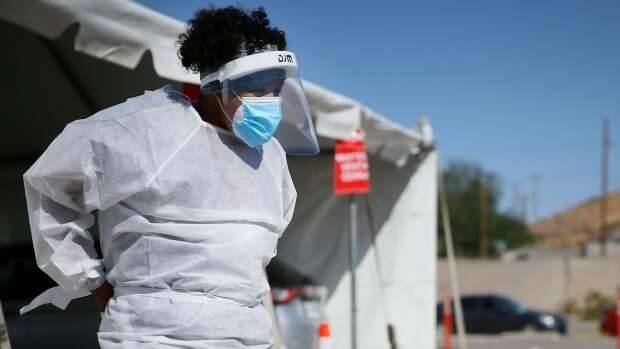This is the deadliest year in U.S. history, with deaths expected to top 3 million for the first time – due mainly to the coronavirus pandemic.
Final mortality data for this year will not be available for months. But preliminary numbers suggest that the United States is on track to see more than 3.2 million deaths this year, or at least 400,000 more than in 2019.
U.S. deaths increase most years, so some annual rise in fatalities is expected. But the 2020 numbers amount to a jump of about 15%, and could go higher once all the deaths from this month are counted.
That would mark the largest single-year percentage leap since 1918 when tens of thousands of U.S. soldiers died in World War I and hundreds of thousands of Americans died in a flu pandemic. Deaths rose 46% that year, compared with 1917.

COVID-19 has killed more than 318,000 Americans and counting. Before it came along, there was reason to be hopeful about U.S. death trends.
The nation’s overall mortality rate fell a bit in 2019, due to reductions in heart disease and cancer deaths. And life expectancy inched up – by several weeks – for the second straight year, according to death certificate data released Tuesday by the Centers for Disease Control and Prevention.
But life expectancy for 2020 could end up dropping as much as three full years, said Robert Anderson of the Centers for Disease Control and Prevention.
The CDC counted 2,854,838 U.S. deaths last year, or nearly 16,000 more than 2018. That’s fairly good news: Deaths usually rise by about 20,000 to 50,000 each year, mainly due to the nation’s aging, and growing, population.
Indeed, the age-adjusted death rate dropped about 1% in 2019, and life expectancy rose by about six weeks to 78.8 years, the CDC reported.
The virus was first identified in China last year, and the first U.S. cases were reported this year. But it has become the third leading cause of death, behind only heart disease and cancer. For certain periods this year, COVID-19 was the No. 1 killer.
But some other types of deaths also have increased.
Photo credit: Briana Sanchez/The El Paso Times via AP, File
News source: The Associated Press











